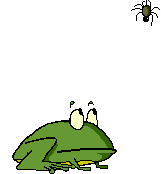Consequences are the events that
There are 2 major kinds of consequences
The label, reinforcer or punisher, is given after examining the behavior for changes.
You can make an educated guess as to whether a particular event is likely to function as a reinforcer (e.g., candy) or as a punisher (e.g., a spanking). However, the proof is in the behavior.
A reinforcer is any consequence that causes the preceding behavior to increase. The increase may be in intensity, frequency, magnitude or some other quality.
There are two subtypes:
Events that increase behavior (and are contingent on the behavior) may be presented to the subject (e.g., candy). This is what most people think of as a reinforcer. Its proper name is positive reinforcer.
Positive comes from medical terminology which means that something is added or present (e.g., when a test for cancer comes back positive, it means cancer is present).
To learn more about Positive Reinforcement, including detailed explanations of reinforcers, visit Positive Reinforcement: A Self-Instructional Exercise (http://server.bmod.athabascau.ca/html/prtut/reinpair.htm)
There is another type of reinforcer.
Some behavior increases because it allows the subject to avoid something. For example, cleaning the room allows a child to escape a parent's nagging. In this case, an event is subtracted or absent. This type of reinforcer is called a negative reinforcer (e.g., when a test for cancer comes back negative, it means there is no cancer). When the behavior is emitted, the unpleasant or aversive stimulus stops. The behavior allows the person to escape an aversive situation and thus the behavior is repeated or increased the next time around.
| Positive Reinforcement |
the presentation of some event causes the behavior to increase. In the animation to the right, the frog looks upward (behavior), sees a spider and eats it, enjoying the flavor (consequence). Based on the increased behavior of looking up, the flavor of the spider is functioning as a reinforcer for looking upward. |
 |
| Negative Reinforcement |
the removal or avoidance of some event causes the behavior to increase. In the animation to the right, the hockey goalie dives for the puck and stops it from entering his net. He avoids the loss of a point for his team. Therefore, his behavior of "diving for pucks" is likely to increase in the future. |
 |
Notice that Positive and Negative Reinforcers may be operating simultaneously in the real world. The frog avoids hunger (negative reinforcement) and the hockey player hears the cheers of the crowd (positive reinforcement). However, there is a primary mechanism in each instance. Even when he isn't very hungry, the frog is likely to scan the sky and may grab an occasional spider. Even if the crowd wasn't there, the hockey player would still try to stop the puck to avoid the loss of points (e.g., when playing at away sites).
It is very common to confuse the term negative reinforcer with the term punishment. But remember that the key difference is, a negative reinforcer increases behavior and a punisher decreases behavior.
The more important part of the term "negative reinforcer" is the "reinforcer" part. A common mistake is to focus on the "negative" and think that means unpleasant. Actually the person is quite happy to avoid or escape the situation and will work hard (increase behavior) to do so.
It may help to think of the "positive" and "negative" as referring to the two sides of a coin. You will work to get the reinforcement and that may be in order to get the coin (positive reinforcer) or to avoid being without coins (negative reinforcer).
Very often in real life examples, both types of reinforcers function together.
However, in many instances one or the other has a dominant role. For example, in running from a fire, avoiding being burned likely has greater immediate impact than whatever positive event waits at the end of the run. Immediacy is your guide to what to place greater weight upon. Which event (consequence) occurs more immediately?
On exam questions, read questions carefully to see if any particular consequences are identified. But remember, first look to see what the behavior is doing (increasing-- reinforcement; decreasing--punishment)
These are hypothesized reinforcers for the average person. Whether or not they actually are depends on the change in behavior associated with them. Notice that the emphasis is on immediate consequences.
Can you fill in the blanks with your hypotheses about possible reinforcers? Possible answers below
| Behavior | Positive Reinforcer | Negative reinforcer |
| Sleeping | feel alert | avoid feeling tired; avoid doing school work |
| Studying | feel knowledgeable, praise self; get to go to sleep | avoid worry over low grades |
| Cursing | seeing shock/attention on someone's face | feel some release from muscle tension |
| Paying bills | seeing the neat piles of paid bills | avoid worrying about debt |
| Asking a question in class | receive an answer | avoid confusion |
| Eating soup when you have the flu | 1. | avoid nausea |
| Swatting a fly | 2. | escape the buzzing annoyance |
| Walking into class late | attention when arrive | 3. |
| Turning down the loud radio | enjoying the quiet | 4. |
Suggested answers for a typical human being as subject.
Here are some on-line sites that offer further examples or activities
An Exercise to Help You Understand Consequences (http://www.wku.edu/~sally.kuhlenschmidt/psy443/cqtrng.htm)
Contact the author with comments or questions about this site by following the directions at this page (which will open in a new window.)